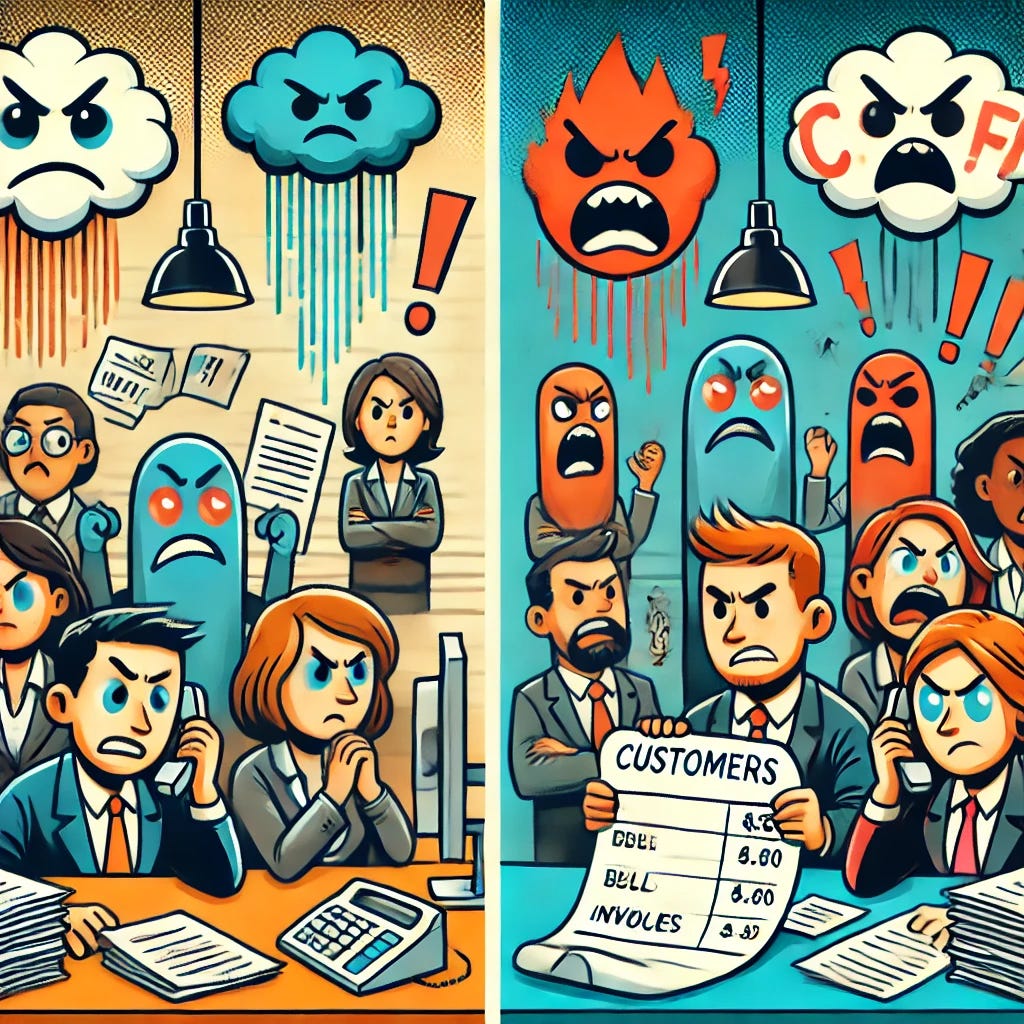The Truth Hurts — But It Also Heals
POV: I had one of those rare client visits—the kind that actually gives me hope. They listened, owned it, and meant it.
Last week, I delivered something I don’t usually call a crisis plan.
Not because it wasn’t one—technically, it was. But calling it that didn’t quite fit.
I called it a Truth Restoration Plan. Because that’s what this group really needed.
Not just help fixing a public mess, but a way to confront and repair the real source of the problem: lost trust.
A Crisis That Was Loud on the Outside — and Rotting on the Inside
I got the call about six weeks ago. The leader was dealing with what they described as a consumer uprising—and they weren’t exaggerating.
A private Facebook group was dissecting their every move
Local media outlets were covering the backlash
Legal action was looming
And a growing chorus of critics was demanding answers
Here’s the thing, though: the external pressure was loud.
But I’ve been doing this long enough to know that what’s loud isn’t always what’s lethal.
What’s lethal is quiet.
What’s invisible.
What eats away at your culture until there’s nothing left holding your reputation together.
And in this case? That silent damage was coming from a place they least expected.
The phrase I always use in this case:
(Honestly, these are the words I use - every time. It means the crisis is coming from the inside.)
What I Almost Missed
Usually, I spot the internal issues fast.
It’s rarely the crisis people think they’re having—it’s the one they don’t see.
But this time, even I underestimated it.
Before I met with the board and leadership team, I spent time with the employees. It was framed as “communication training,” but anyone who’s worked with me knows that’s code for: "Tell me what the hell is actually going on around here."
And oh, they told me.
There was a communication issue, yes.
But more than that, there was a respect issue.
A trust deficit had formed between the staff and leadership—and no one had named it.
Until I did.
The leader sensed something was off.
But after speaking directly with the staff, I knew it wasn’t just “off”—it was in pieces.
Both Sides Were Right—But Only One Was Hurting
The leader had been brought in to launch a major initiative. It was bold, ambitious, and ultimately, successful. It delivered exactly what it was supposed to: profit and progress.
But it came at a cost.
Staff were blindsided by a new leadership style
Consumers were blindsided by pricing and policy changes
The pace of change left no time for buy-in
The leader even admitted to me:
“It was a ‘work with me or move out of the way’ situation.”
They weren’t being cruel. They were being honest.
And frankly? They weren’t wrong.
The initiative wouldn’t have launched without that level of drive.
But here’s what I’ve learned: both sides can be right—and still cause harm.
And when only one side is hurting, the crisis is already in motion.
A Refreshing Call
Telling someone they’re wrong—or that they missed the mark—is the hardest part of my job.
I do it a lot. I never enjoy it. And I almost always get some form of pushback.
But this time?
This client listened. Fully. Openly. Without ego.
They acknowledged their missteps. They welcomed my plan.
They were willing to own the hard truth.
And boy, was it refreshing.
When I told them, “I know you’ll get through this,” I wasn’t offering empty encouragement. I meant it.
Because leaders who are willing to hold up a mirror—even when the reflection stings—are the ones who will actually do the work to change.
Very refreshing indeed.
The Truth Restoration Plan
What I walked them through wasn’t spin. It was substance.
The client’s “Truth Restoration Plan” included:
✅ Owning the visible missteps
✅ Addressing the invisible cultural breakdown
✅ Creating a roadmap to rebuild trust inside and out
This wasn’t just a PR fix. It was a reputation reset.
If those points look familiar, they should — it’s my Indestructible PR framework: Own It, Explain It, Promise It.
Not many organizations are brave enough to go there.
But the ones that are? They’re the ones that make it.
If You Struggle to Deliver the Hard Truth...
You’re not alone.
Whether you’re a communicator trying to guide a leader—or just someone who has to tell someone they’re off the mark—it’s never easy to say: “This isn’t working.”
So let’s talk about how to do it the right way.
Join me LIVE on Substack
Tuesday, April 15 at 12 PM ET
Special guest: Dr. Abby Medcalf, relationship expert
We’ll talk about how to give honest, constructive feedback that helps—not hurts—the relationship.
Bring your questions. Bring your stories.
We’re getting real on this one.
Click HERE to join the live chat.
Hope to see you there!
– Molly



EXCELLENT blog Molly - this one really resonated with me and my professional experiences. Reminds me of a time I had to tell leadership “you don’t get to control *why* they’re angry or *what* they’re angry about - you can *only* control your reaction to that anger.”
In my experience, leadership often tries to manage the crisis/audience itself rather than their response.
Love this, Molly! We fundamentally differ regarding enjoyment of telling people they’re wrong (I… definitely don’t hate it; call it my toxic, but hopefully tactful, trait). Seeing people actually learn and change from reflection and understanding is so satisfying. Makes you realize why everything you do is so worth it.